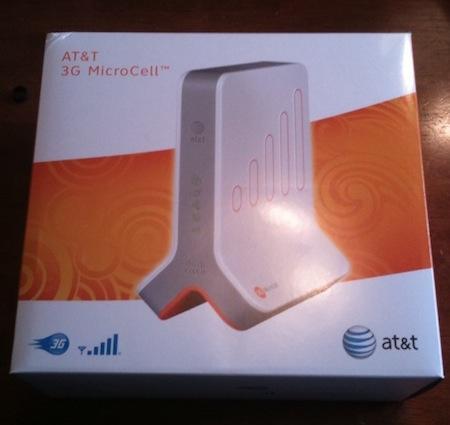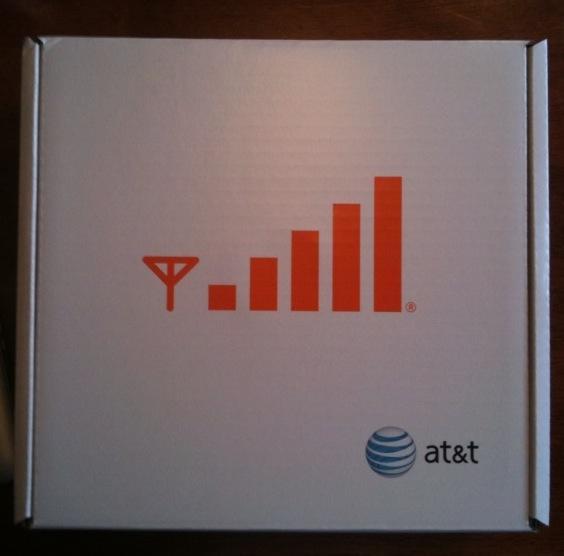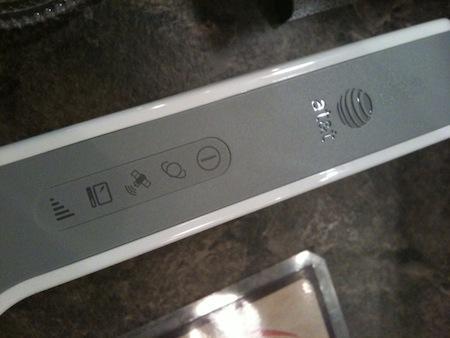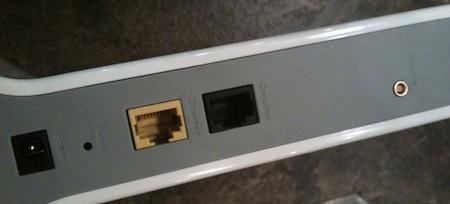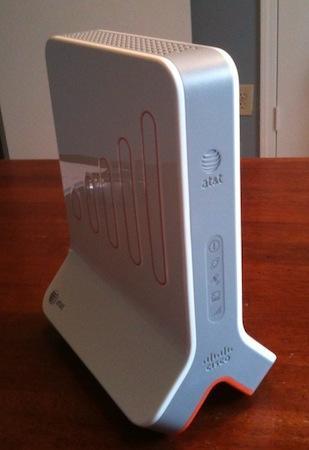
Tech journalists and savvy consumers are likely to agree that AT&T has taken a hit as of late in the coverage department. From editorials citing reception troubles in metropolitan areas, to iPhone complaints in New York City, to the 3G advertising campaign brought on by Verizon, it seems to be a common issue. The AT&T 3G MicroCell, built by Cisco, attempts to quell the problem by providing 3G voice and data services up to 5,000 square feet. It supports up to four voice or data users at once, seamless call hand-overs, and it can be moved from location to location once it's purchased in an authorized MicroCell market (meaning that I could purchase in Charlotte, and send to a relative in New York City).
Sporting AT&T Mobility's orange color, it's a large unit, sitting almost as high as the display on my MacBook Pro. The connectivity is simplistic, offering a computer, ethernet, antenna, and power port on the back, along with a reset hole. The front of the device has five status lights: power, internet, GPS, computer, and wireless connectivity. After registering the device online, making the necessary connections to my wireless router, and plugging the device in, initial setup took about 75 minutes (just shy of the 90 minutes stated on the box). Once the process was complete, I received a text message stating that the MicroCell was ready for use. The unit supports up to 10 wireless numbers, with up to four being able to connect at any given time.
During the Thanksgiving holiday, I put the device to the ultimate test: my family's home in Western North Carolina. Notorious for a lack of AT&T coverage (and several other carriers, due to the location of their home), my phone has always displayed "No Service" just before pulling into their driveway. If I'm lucky, I'm able to get one bar upstairs, provided I hold the phone the right way. Thanks to the MicroCell already being activated, it configured itself in just under 15 minutes. Needless to say, the difference was night and day. My phone immediately registered a full five bars of service (with the exception of their living room, due to the design of the house), and I was able to browse at 3G speeds. Gone are the days where I've had to carry a secondary phone while visiting due to a lack of reception. Not only was there a marked improvement in coverage, but call quality was fantastic as well.
The argument will inevitably circle around the $150 price tag. Sure, it can be lowered by $100 (after mail-in rebate) with the addition of a $20 unlimited MicroCell calling plan, but should customers be paying for improved service (directly, at least)? Personally, I'd like to see the MicroCell's price point lowered to the sub-$100 mark, with a free unit provided for those that live in coverage-challenged areas (after verification by customer service and technicians). For those that prefer a carrier-centric device like the iPhone, however, the MicroCell may be the best bet for you.
Additional information on the AT&T MicroCell can be found here.
